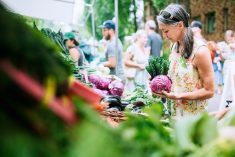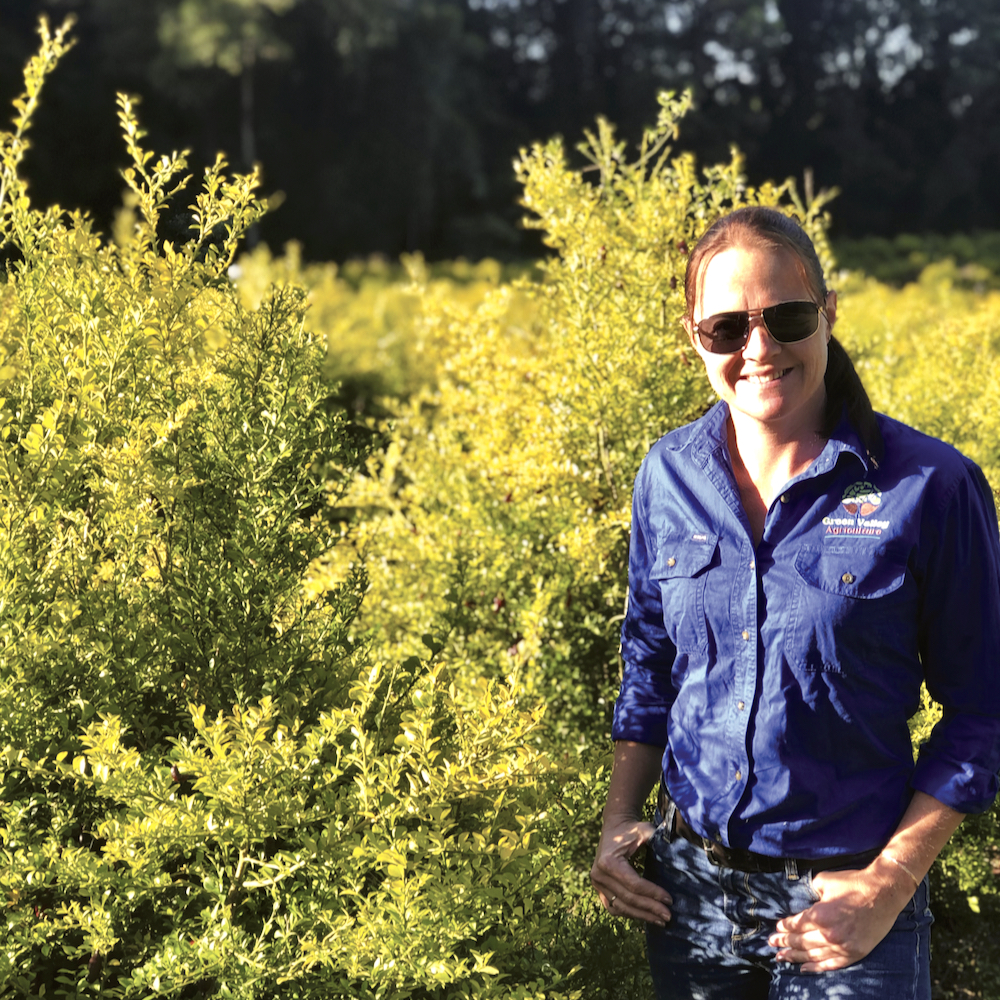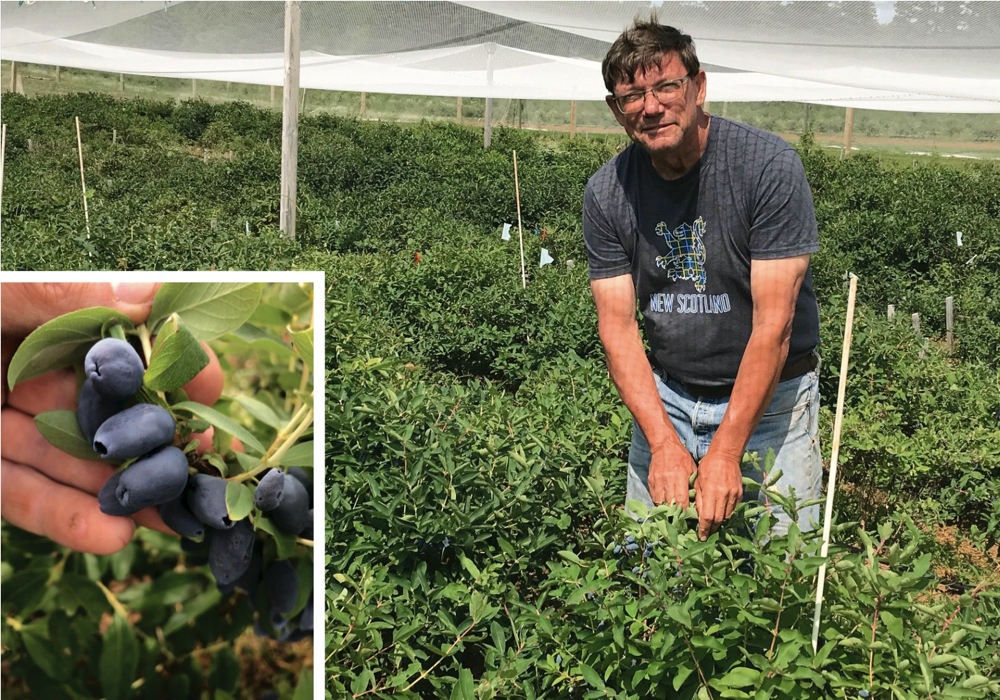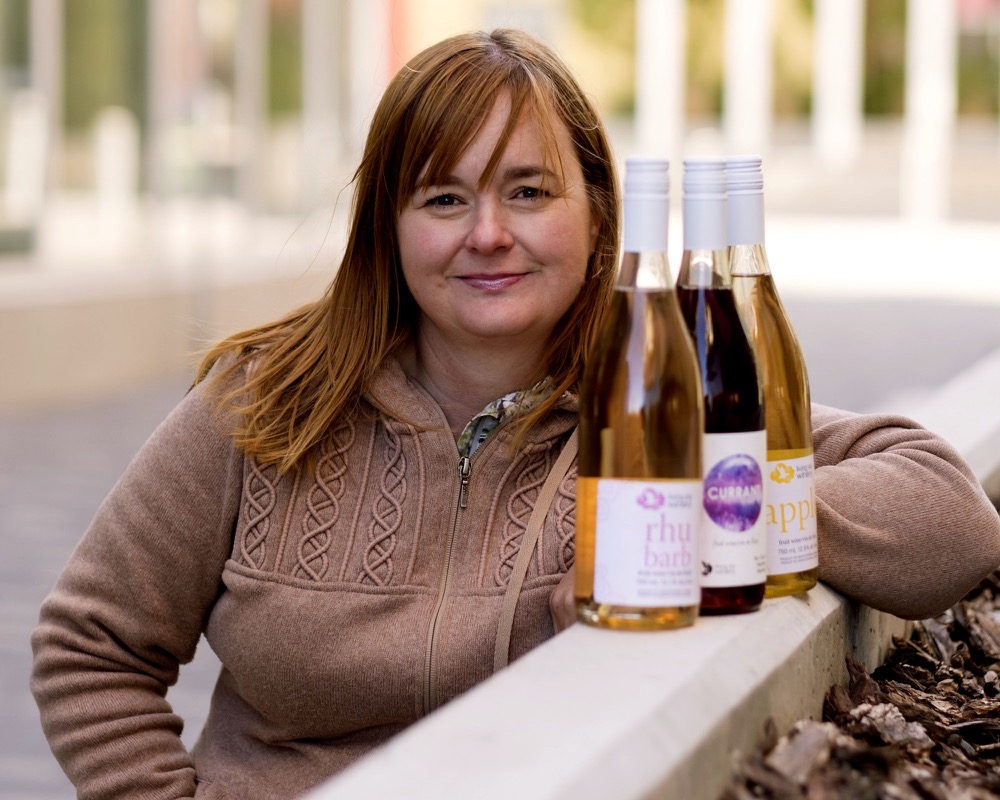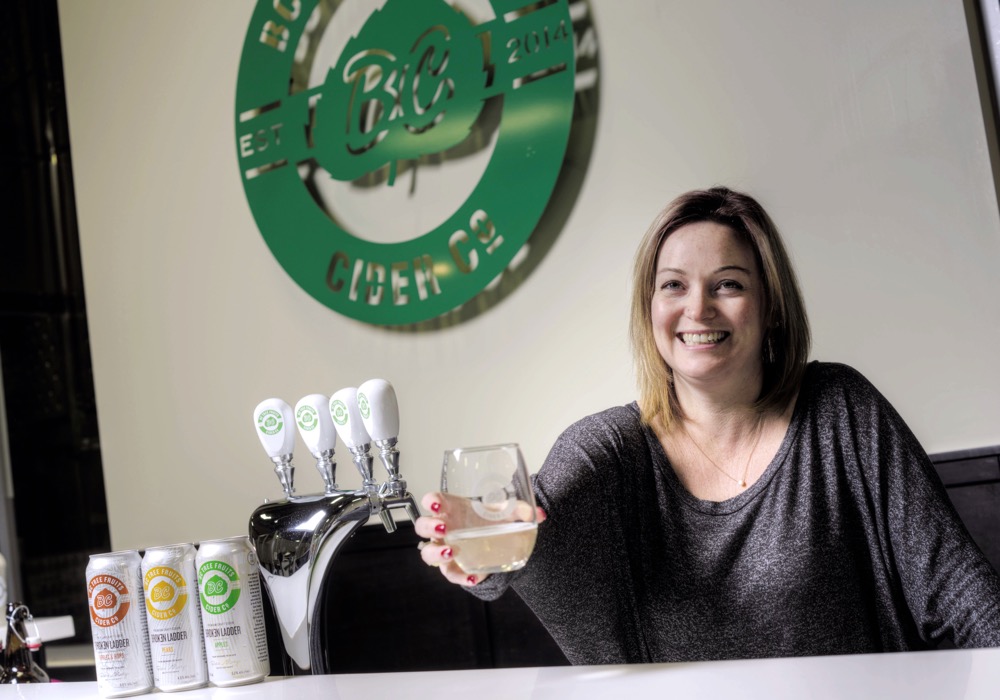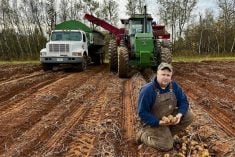Everyone who farms has a story about how they chose the life, whether they were born into it or started from scratch. And no matter who tells the tale, it always involves some luck, some good timing, lots of learning and pure determination.
Maybe in this case, though, it depended more on the stars than usual. For Easton Sellers, the opportunity to farm came out of pure serendipity. Even Sellers admits a farm career was once the farthest thing from his mind.
But then he met a Manitoba couple with a small farm to sell and no immediate plan for exactly what would happen next, and his thoughts began to turn to an agricultural career.
Read Also

Farmland values: assumptions and realities
Where farmland values are headed and what decisions farmers should make
That was in 2015 when Sellers, a young American who was born and raised in the suburbs of Orlando, Florida, (we did say this story involves a weird alignment of the stars!) was taking time off from university to travel and do some soul-searching, as so many twenty-somethings do.
It wasn’t exactly a conventional start. Sellers somehow found his way to Manitoba’s Interlake that summer to work on another farm, taking part in the Willing Workers on Organic Farms (WWOOF Canada) program. Since 1971, the program has provided a cultural exchange for international visitors to experience rural living and gain practical skills while living on host farms.
It was his first taste of farm and rural life, and an eye-opener, exposing Sellers to a livelihood and lifestyle he’d never previously experienced and knew next to nothing about.
“I had no agricultural background whatsoever, not even gardening. And I had never heard of Manitoba either,” Sellers says. “I spent a couple of months in the Interlake and had a really good experience so I came up the following year for the whole season, to get the whole picture.”
That’s when he was introduced to Bob Pizey and Betty Kehler who had their 40-acre Plum Ridge Farm, an organically managed fruit farm near Teulon, Man., up for sale.
The couple befriended him and he began learning how they themselves had started from scratch in the 1970s. They also revealed they were looking for a successor. In fact, the couple had been visited by various potential buyers, but so far, there’d been no takers.
Sellers began to think about the possibility of becoming that successor, but the hurdles were high. He lacked the means to buy a farm, and being from the U.S., knew he would have to wait, possibly several years, before he could gain Canadian citizenship to even become eligible for a farm loan to purchase it. Plus, he had no training as a farm manager.

But there was a kind of link to build on. As he began his own foray into agriculture, Sellers had in common with Pizey and Kehler, what, was that they themselves also started afresh, neither of them having ever owned a farm, although Kehler had grown up on one.
They had also started with what the real estate market would call “a project,” 40 acres of marginal grain land and bush, with a simple farm house, that Pizey bought in 1976.
That was the long-shot birth of Plum Ridge Farm, but then Kehler joined him shortly afterward, and the pair would go on to transform the site over the next 40-plus years into a prosperous U-pick producing organically grown apples, saskatoons and field-grown strawberries, becoming one of the few farms in the province to do so at this scale.
It begins for real
Intent on learning all he could, Sellers began an informal yet focused mentorship with Pizey and Kehler in 2016, learning all about their farm practices and the farm’s history and management. The couple saw hopeful prospects in him.
Sellers remembers that year well, walking the width and breadth of Plum Ridge Farm, with the prospect of settling in Canada and becoming the couple’s successor growing large in his imagination. Then he screwed up his courage and sat down and told Kehler and Pizey he was prepared to commit to it — if a path would open to make it possible to transfer ownership to him one day.
“I had set my mind on this,” he says. “I said, ‘I’ll do my part and I’ll do everything I can do!”
Then the stars got involved again. A long-time family friend of Pizey’s and Kehler’s worked out a purchase agreement with Sellers for when he’d be in a position to buy it himself.
That deal enabled Pizey and Kehler to move to new retirement digs in B.C. and Sellers to begin his immigration procedures.
Sellers moved to Plum Ridge Farm in 2017 to live and manage the property entirely on his own. He also joined the Prairie Fruit Growers Association in Manitoba that year. And, by using everything he’d learned so far, he began to re-establish strawberry acres the couple had discontinued when their own capacity for the labour-intensive work had declined.
Still, the old adage “the more you know…” was firmly planted in his mind. Expecting a wait of several years for his citizenship transfer, he decided to enrol as an international student at the University of Manitoba’s diploma of agriculture program, too. Kehler was herself a graduate of it years earlier, and recommended it.
Sellers entered the program determined to become the best farm manager possible for Plum Ridge Farm. He knew he needed many skill sets and competencies, plus the mindset of a manager to make this actually work.
His mentorship with Pizey and Kehler had gone well, “but you can’t just tell someone how to farm,” he says.
“I knew I needed to start preparing myself to make smart decisions.”
From tiny acorns
By 2018 Sellers had a full year at Plum Ridge Farm behind him, plus his first year in the diploma program. He’d seen his first strawberry crop, a mere half-acre, through to maturity, and 2018 turned out to be a banner year, with the weather co-operating and plentiful berries.
Plum Ridge Farm’s loyal customers returned in droves. It was the best possible way to begin, says Sellers. “The amount of fruit produced on half an acre blew my mind,” he says. “I really needed that, so I knew what’s possible.”
The following year, of course, things didn’t go quite as well. That was part of the education too. The 2019-20 crop year saw untimely downpours followed by drought, made even more difficult because Sellers was experimenting with a new strawberry variety and with management methods that ended up reducing yield.
And it has been up and down since then too. 2021, for instance, was simply “a disaster” from winter-kill.
Still, Sellers has always been undeterred. These have been valuable lessons for him, he says, because they combined with all he was learning in his classes about business risk management, and how to ride out the highs and lows that inevitably come with every farm year.

Getting noticed
Sellers was, as they say, a keener, both on the farm and at school, and the school noticed. He was co-valedictorian for his 2019 graduation class, but he wasn’t done with school then either. He was hired that year to become one of its full-time farm management instructors.
Sellers is now settled into life on the farm, and into his position with the University of Manitoba, and has become a director with Prairie Fruit Growers Association (PFGA), the non-profit group representing Manitoba and Saskatchewan fruit growers. He remains manager for Plum Ridge Farm for now, but he’s on course to become the farm’s owner, too.
“I am in the process of purchasing,” he says. “We developed a purchasing agreement throughout the succession process and now I’m still only on a work visa, so the immigration story continues. I have applied for permanent residency and that takes time. Hopefully, that will go through, and then I will have access to financing. I cannot get a farm mortgage as a young farmer, or any sort of home mortgage, without being a permanent resident.”
The purchase agreement, he adds, was of utmost importance for clarifying each party’s goals. Again, it was studying agriculture, plus being advised by experienced growers through PFGA that informed the development of that agreement, he adds.
Importantly, he now has a Manitoba farm family of his own as well. He has met the woman he’ll eventually marry in Manitoba, too. She is Olivia Carey, a commercial airline pilot, raised on an Interlake farm, but not interested in farming herself. They plan to get married in the next couple of years.
“She doesn’t want to be a farmer, but she helps me out a ton,” says Sellers. “And her family is one of the great supports I’ve had here … Farming is sometimes made possible by farm family members who don’t necessarily want to be farmers.”
True to the vision
Sellers gave his assurances to the departing Kehler and Pizey that he’ll continue to advance their vision for the farm. He has no plans to make any immediate changes or to switch from their organic practices. But he will add new technology as he sees a need and fit for it, he says. To date that’s included digitizing the irrigation system so he can control it from his cell phone — “a big labour saver,” he says — and he’s also added a weather station and soil probe to take some of the guesswork out of managing the strawberry fields.
Sellers’ story is about a young urbanite without a farm background discovering that farming was the thing he most wanted to do, and if you ask him, he’ll tell you it’s about being incredibly lucky and having an opportunity like this present itself.
It was Pizey and Kehler’s ultimate success that spurred him to want to take his own life in this direction, he says.
“I felt like I wasn’t starting from complete scratch,” he says. “It’s rare. This farm is a beautiful place. Bob and Betty did an amazing job and devoted their lives to this property … That I have the opportunity to continue here doing that is really special.”
The first time
Bob Pizey and Betty Kehler were do-it-yourselfers from the start. They had the can-do mentality of a farmer, matched by a farmer’s endless energy and ability to learn. Maybe, in other words, they could make a go of it.
Pizey himself had no farm background when he first became intrigued by the idea of small-scale farming in the early 1970s. He’d been born and raised in Winnipeg, and he still remembers the visions he had about what he thought he was getting into.

“I thought about becoming one those bourgeois guys in knee-high boots and a tweed jacket,” he says laughing at the recollection. “The idea kind of suited me at the time.
”But it never did work out like that.”
He was working for an excavation company in Winnipeg when he started looking, with limited means, for some property in Manitoba’s Interlake.
“I thought that all I’d ever be able to afford was some rock and swamp,” he says. A realtor led him to the property northwest of Teulon that was rated excellent for fruit and vegetables. Pizey figured he’d got lucky and bought it.
Of course, though, it wasn’t actually so excellent, and he and Betty Kehler, the smart-as-a-whip young woman he’d met at a Prairie Fruit Growers Association meeting would spend years making it more productive.
Kehler had grown up on a farm in southern Manitoba, but had pursued a social work career, without any prospects for farming herself. Burnt out from that field after a few years, she was home from a stint of world travel and looking for a place to do some good in it when she met Pizey.
It was no picnic on the farm in the early 1980s. “We started out with $5,000 each and interest rates were 22 per cent,” Kehler recalls. It was an education. They needed plumbing but couldn’t afford a plumber so they figured out how to install it themselves. They needed to make repairs to the house and eventually to build a barn and farm shop. They couldn’t afford a carpenter so they did that work too, and they learned farming is a lot more than putting a seed in the ground.
It could have easily been overwhelming, but Kehler says they learned another big lesson to stand back, look at the big picture and take the years one at a time.
“It’s an attitude of, well, okay, we’re on this learning curve. And it finally makes you far richer, because it empowers you so you can do all of this.”
Pizey and Kehler spent the next 40-plus years transforming those 40 acres. They hand planted thousands of trees in shelter belts to surround their property, and established new woodlots. They designed and installed an underground irrigation system for their fruit crops that began to thrive as the soil fertility improved. They stuck to their original vision of farming organically, implementing unusual but effective methods, like their gaggles of geese deployed to serve as weeders of their established strawberry fields.
They also eventually designed and built their own post-and-beam home with help from a few families.
“I read Joiners quarterly before we did that,” recalls Pizey.
Plum Ridge Farm became a popular summer destination with loyal U-pick customers. They had a strong community around them, and the vivacious couple also built up a large network in the province’s organic sector, and forged many friendships among younger people, too. Some would come and go on Plum Ridge Farm during Pizey’s and Kehler’s final years, looking after the place during their absences, and expressed genuine interest in becoming its successors.
There was much to learn from the couple. Always careful with cash, the couple were strict about budgeting, always tracking gross farm income and costs of production, and discerning between needs and wants. No purchase was made without an assessment of its impacts on their bottom line. They owned all the farm equipment they needed, and a truck, but never a car.
They lived well by living simply, say the couple.
“I had a sharp pencil. I thought that was pretty important,” says Pizey. “It seemed like a more likely way to prosper.”
Kehler says a big part of their ambition was to encourage other young farm entrants that theirs is a doable way to farm, with the right skills and mindset, and a satisfying way to live, too.
“We learned so much about growing food and how important food is and we were always encouraging other people, especially the younger generation, that growing food is always going to be really important,” says Kehler.
“We thought we’d be like starter yeast, inspiring a huge number of young people to do this.”
That didn’t quite happen as they thought it might, she says. But she does see a new generation making calculated decisions and figuring out their own way to get started, too. In fact, she sees new urgency in them. “Growing food locally is going to be way, way, way more important.”



